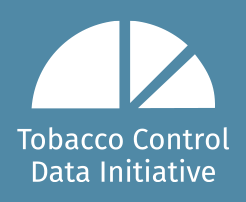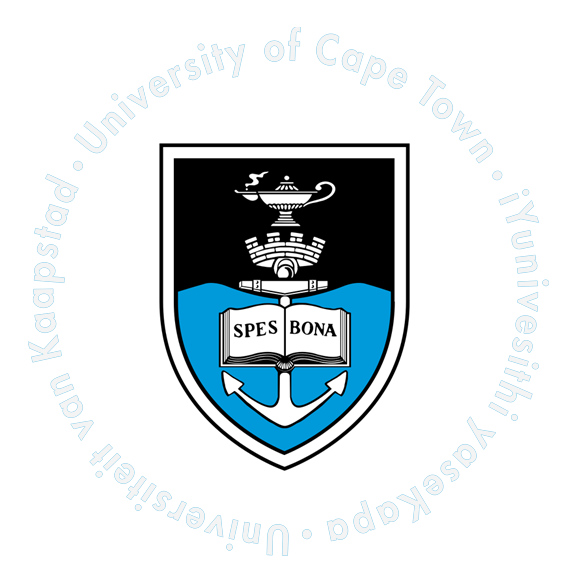Data and Methods
In this page we explain the process followed by Development Gateway, in partnership with the University of Cape Town, in the development of the TCDI South Africa website, as well as a description of the data sources and analysis methods used in each of the website’s themes.

Methodology
View the methodologies for the respective themes
Methodology Overview
The TCDI South Africa website was developed by Development Gateway in partnership with the University of Cape Town. The website is intended to respond to the needs of government, civil society and academic stakeholders by providing access to demand-driven, high-quality data on national tobacco prevalence, products, and policies. The design, functionality and content for the website are led by the South African tobacco control community’s needs. This document outlines our overall website methodology.
1. Identifying Stakeholder Needs
In January and February 2020, the TCDI team selected stakeholders from 12 tobacco control organisations (see full list here). We conducted short interviews with each one to explore how they make decisions, the data used for these decisions, potential data gaps, and their preferred format for receiving data (e.g. graphs, short paragraphs, infographics). Stakeholders included representatives of government, civil-society-organisations and academia.
2. Reviewing Stakeholder Feedback and Prioritising Needs
The stakeholder feedback was documented during the interviews and later analysed to identify cross-cutting data gaps and the stakeholders’ preferred formats for receiving information. The feedback was distilled according to the frequency and urgency with which each was mentioned by the stakeholders. This process produced 6 priority data gaps and 7 data format guidelines:
Priority data gaps
- Tobacco Prevalence
- Illicit Tobacco
- Impact of Tobacco Policies
- Health Burden of Tobacco
- E-cigarettes
- Tobacco Agriculture
Preferred data format
- Short, concise and attention grabbing
- Simple and easy to understand
- Clear visuals
- Factsheets and individual stories
- Trustworthy data with clearly stated sources
- A data repository with data from multiple themes in one place
- South Africa or Africa-specific information
The preferred data gaps and format were confirmed with the stakeholders in an interactive workshop in June 2020, during which each data gap was discussed further to identify the sub-thematic components stakeholders wanted to learn more about (for instance, for the tobacco agriculture theme, various sub-themes, such as employment and health risks etc., were identified).
3. Research and Analysis
The TCDI team conducted research and data analysis for each theme, including systematic research of reliable primary data (e.g. data collected by academic institutions, global foundations or governments) and secondary data (e.g. peer-reviewed academic articles). Where required, the primary data were analysed by the team’s economists using statistical software such as Stata and R. The stakeholder needs were reviewed against the primary and secondary data available, relevant statistics and graphs were produced, and explanatory text was written.
4. Website Design
Using the 7 data format guidelines as a starting point, the TCDI team designed the visual elements and functionality of the website. This process included designing the visual elements (infographics, chart formats and colours) and the user functionality (menus, data exports and search functionality).
5. Expert Review
At least two expert tobacco-control academics were selected per theme to review the quality and reliability of the content. Their feedback was integrated into the text and the design of the website.
6. Stakeholder Review
The 19 tobacco-control stakeholders were invited to small online group discussions during which they opened the website link for the first time, shared their screens and narrated their experience as they navigated through the website. The TCDI team documented the process, noting down any areas for improvement, and evaluating whether the information addresses users’ data needs and the visuals are clear and easy to understand. All feedback was collated to produce a stakeholder feedback matrix.
7. Finalise Design
Using the stakeholder feedback matrix as a guide, the TCDI team conducted additional desk research (where required) to find and analyse data to fill any remaining data gaps. In addition, visual elements and functionality were redesigned wherever necessary. The changes were incorporated into the website themes and the website was published online.
8. Update Periodically
Periodically, the TCDI team will consult with experts, review newly available data, and update the website to reflect any changes, where necessary. Please fill out the Showcase Your Work form if you have newly available data or publications you would like to share.

Data Download
In 2022, the TCDI team completed the South African E-Cigarette Survey 2022 (SAES 2022). The aim of the survey was to provide data related to the use of electronic nicotine and non-nicotine delivery systems (ENDS/ENNDS) and heated tobacco products (HTPs) (collectively termed “novel products” in the study’s reports) amongst adults in urban South Africa, and to assess the sequence of use for dual users (people who have used novel products and smoked combustibles). More information on the data collection and methodology is available under the e-cigarette tab above.
The data and accompanying documents are also available for download from DataFirst.

Licence
The content in this website is licensed under the Creative Commons Attribution-NonCommercial 4.0 International licence. Users of this website can copy and redistribute the material in any medium or format, as well as remix, transform, and build upon the data. When reusing the data, users must:
1.
Credit Tobacco Control Data Initiative as the source of data and indicate if changes are made to the data.
2.
If content is shared, it needs to be done using the same licence or similar licence. Users cannot share the data with more restrictive rights to use than under the original website licence.
3.
Users can use the data as they see fit, but cannot use the material for commercial purposes.
See the full licence terms here.

Disclaimer
The information displayed on this website is obtained from multiple sources and has undergone a rigorous verification process. Nevertheless, the accuracy and validity of data and information cannot be guaranteed. The website should therefore be used for guidance only. The TCDI team, and the authors whom we reference, cannot be held responsible for how the information is used.

Contact details
For any queries on the TCDI methodological approach and data sources, kindly contact the TCDI Data Manager.

References




